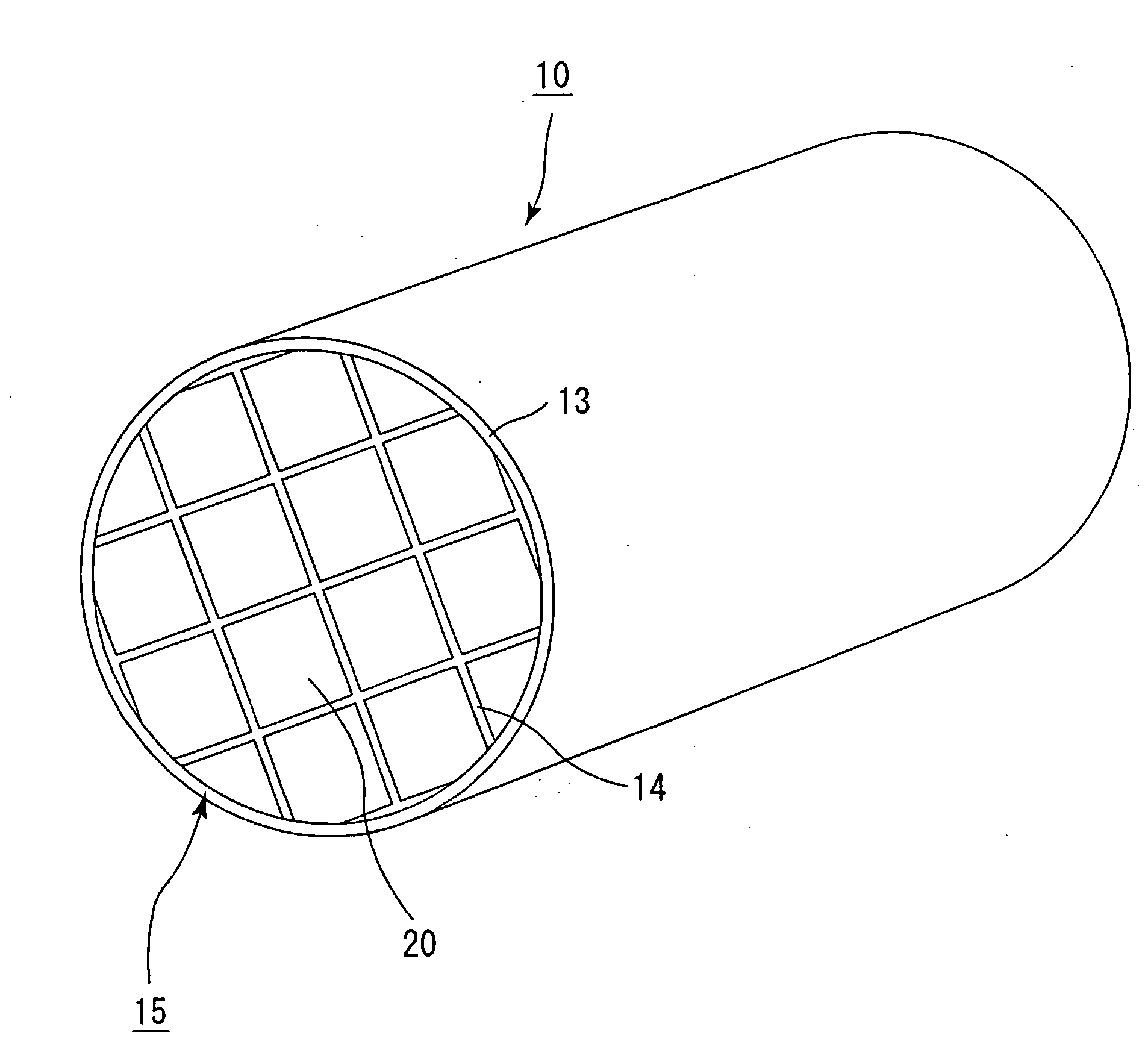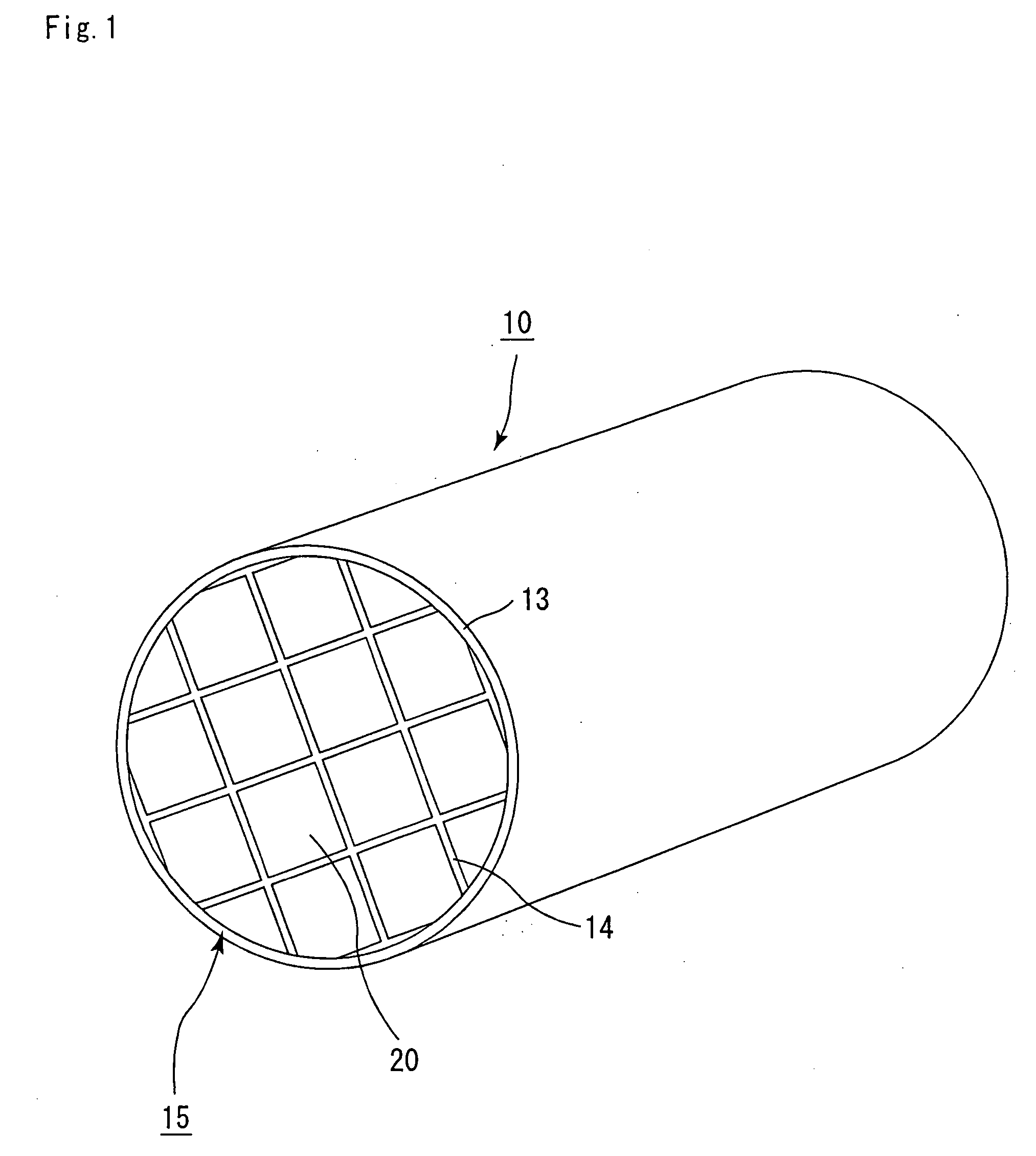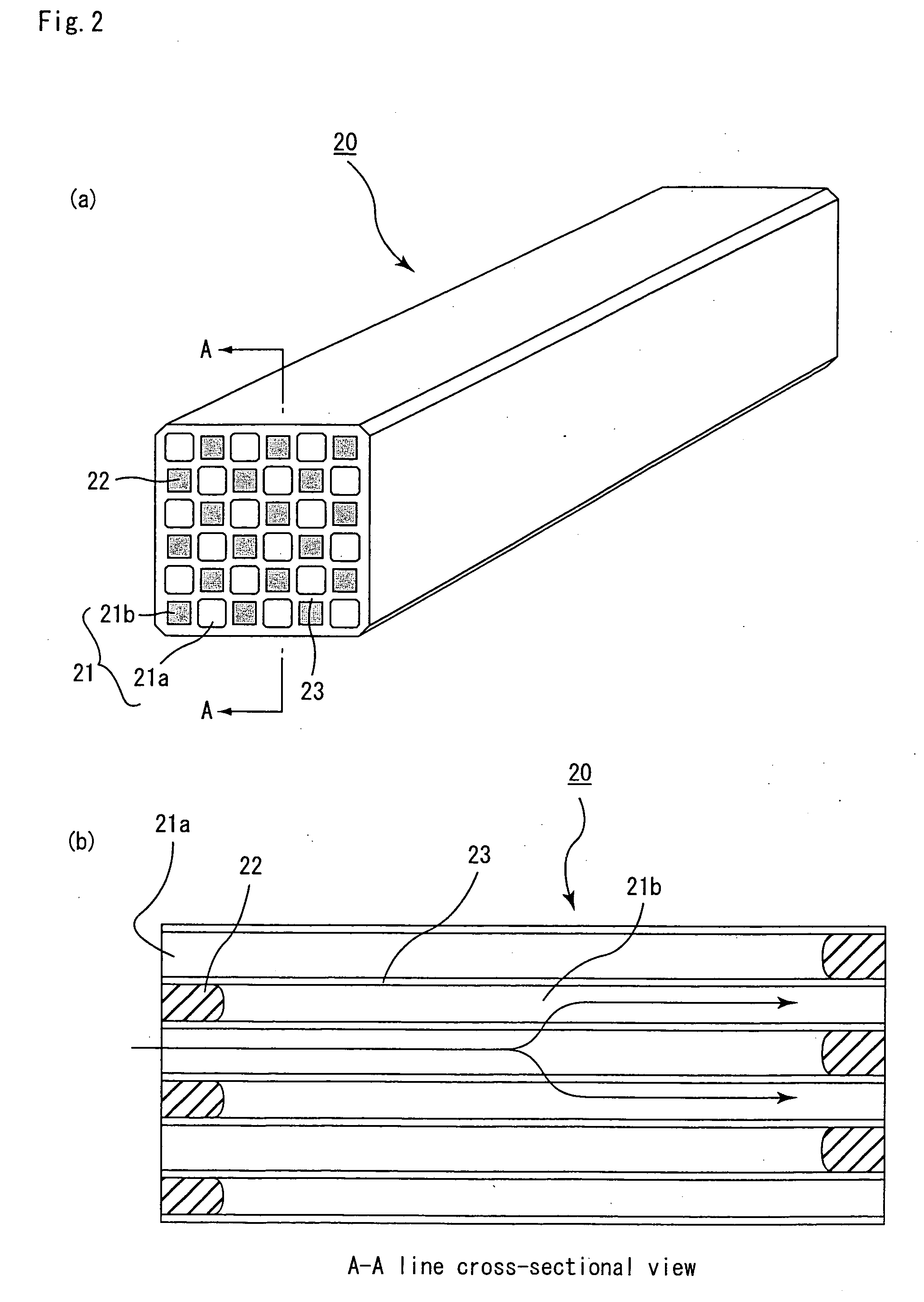Honeycomb structure
a technology of honeycomb and structure, applied in the field of honeycomb structure, can solve the problems of high pressure loss, containment, and high pressure loss, and achieve the effects of reducing pressure loss fluctuations, increasing the limiting collection amount of particulates, and reducing pressure loss
- Summary
- Abstract
- Description
- Claims
- Application Information
AI Technical Summary
Benefits of technology
Problems solved by technology
Method used
Image
Examples
example 1
[0152] (1) Powder of α-type silicon carbide having an average particle size of 10 μm (60% by weight) and powder of β-type silicon carbide having an average particle size of 0.5 μm (40% by weight) were wet-mixed, and to 100 parts by weight of the resulting mixture were added and kneaded with 5 parts by weight of an organic binder (methyl cellulose) and 10 parts by weight of water to obtain a mixed composition. Next, after a slight amount of a plasticizer and a lubricant have been added and kneaded therein, the resulting mixture was extrusion-molded so that a formed product, which had almost the same cross-sectional shape as the cross-sectional shape shown in FIG. 3(a), was manufactured.
[0153] Next, the above-mentioned formed product was dried by using a micro-wave drier to form a ceramic dried body, and predetermined through holes were then filled with a paste having the same composition as the formed product. After having been again dried by using a drier, this was degreased at 400...
example 2
[0161] The same processes as Example 1 were carried out except that the cross-sectional shape of the columnar porous ceramic member was made almost the same as a cross-sectional shape shown in FIG. 3(b) so that a honeycomb structural body was manufactured.
[0162] The thickness of the partition wall 43 of a columnar porous ceramic member 40 in accordance with Example 2 was 0.4 mm, the width of a cross section perpendicular to the length direction of the large-capacity through hole 41a was 1.84 mm, and the width of the cross section of the small-capacity through hole 41b was 1.14 mm, and with respect to a cross section perpendicular to the length direction of the columnar porous ceramic member 40, the ratio of areas of the large-capacity through holes 41a was 46.0%, and the ratio of areas of the small-capacity through holes 41b was 18.1%.
[0163] In the columnar porous ceramic member 40 of Example 2, the distance between centers of gravity in cross sections of adjacently located large-...
example 3
[0164] The same processes as Example 1 were carried out except that the cross-sectional shape of the columnar porous ceramic member was made almost the same as a cross-sectional shape shown in FIG. 3(c) so that a honeycomb structural body was manufactured.
[0165] The thickness of the partition wall 53 of a columnar porous ceramic member 50 in accordance with Example 3 was 0.4 mm, the width of a cross section perpendicular to the length direction of the large-capacity through hole 51a was 2.05 mm, and the width of the cross section of the small-capacity through hole 51b was 0.93 mm, and with respect to a cross section perpendicular to the length direction of the columnar porous ceramic member 50, the ratio of areas of the large-capacity through holes 51a was 53.5%, and the ratio of areas of the small-capacity through holes 51b was 12.0%.
[0166] In the columnar porous ceramic member 50 of Example 3, the distance between centers of gravity in cross sections of adjacently located large-...
PUM
| Property | Measurement | Unit |
|---|---|---|
| porosity | aaaaa | aaaaa |
| porosity | aaaaa | aaaaa |
| porosity | aaaaa | aaaaa |
Abstract
Description
Claims
Application Information
 Login to View More
Login to View More - R&D
- Intellectual Property
- Life Sciences
- Materials
- Tech Scout
- Unparalleled Data Quality
- Higher Quality Content
- 60% Fewer Hallucinations
Browse by: Latest US Patents, China's latest patents, Technical Efficacy Thesaurus, Application Domain, Technology Topic, Popular Technical Reports.
© 2025 PatSnap. All rights reserved.Legal|Privacy policy|Modern Slavery Act Transparency Statement|Sitemap|About US| Contact US: help@patsnap.com



